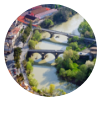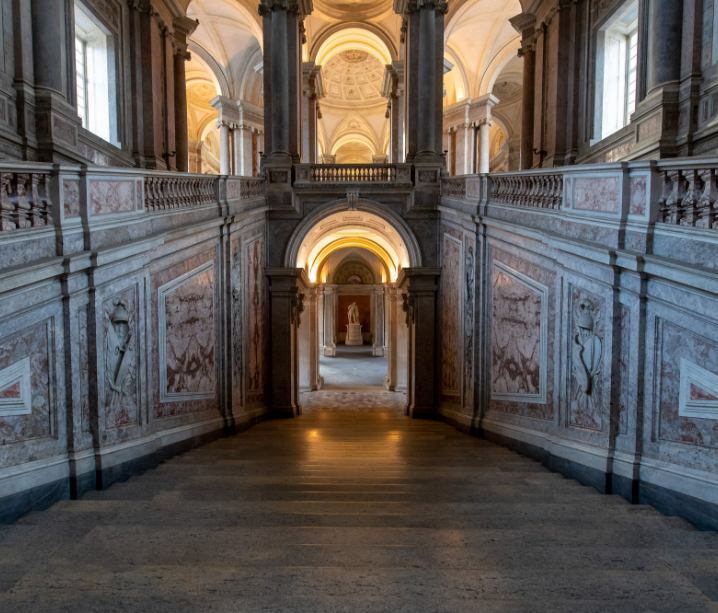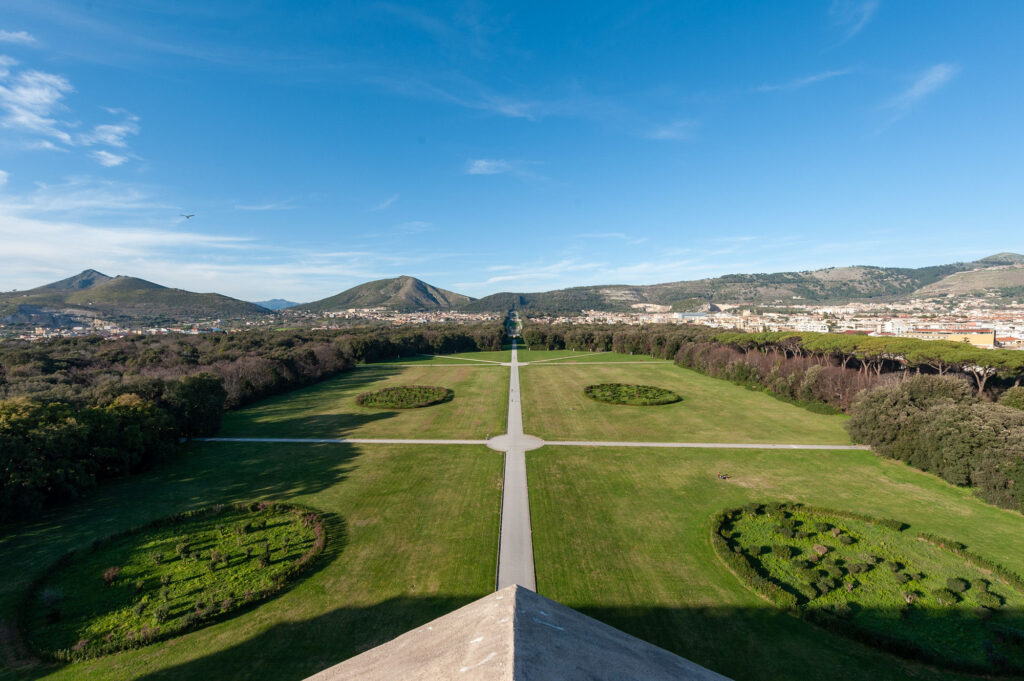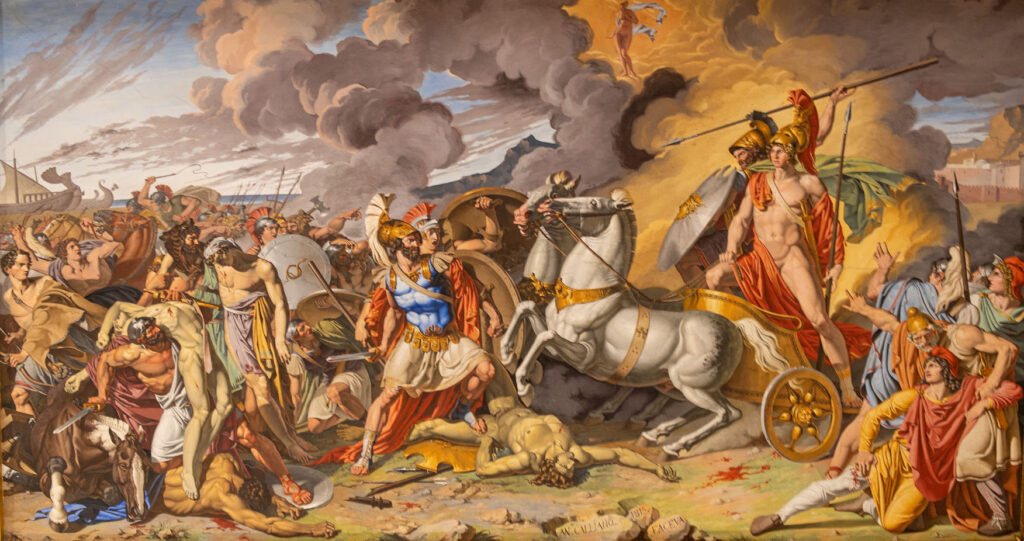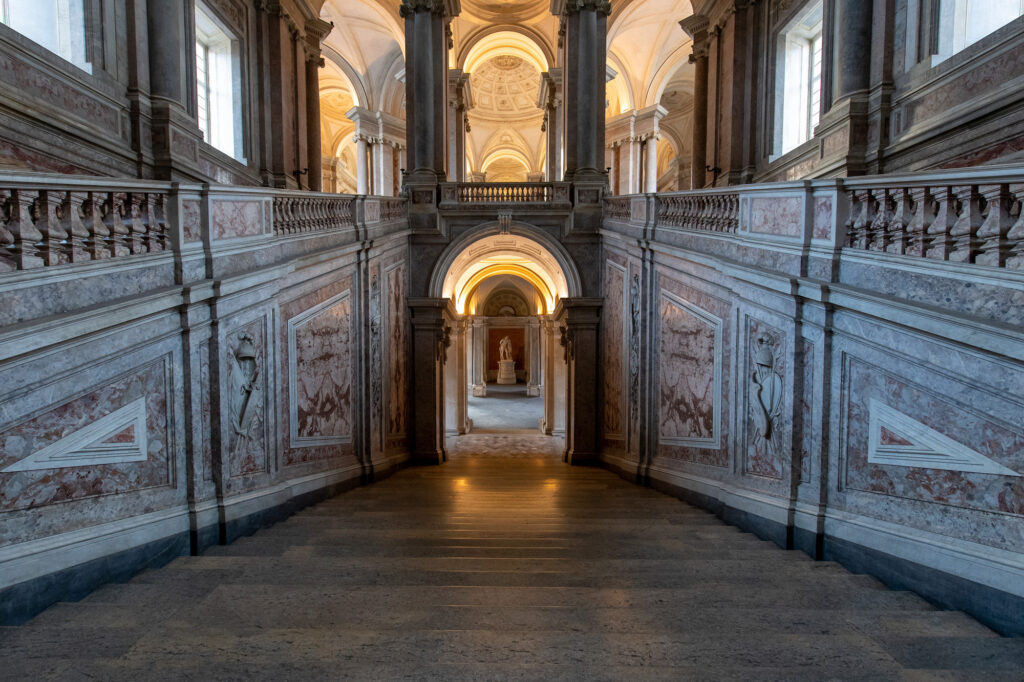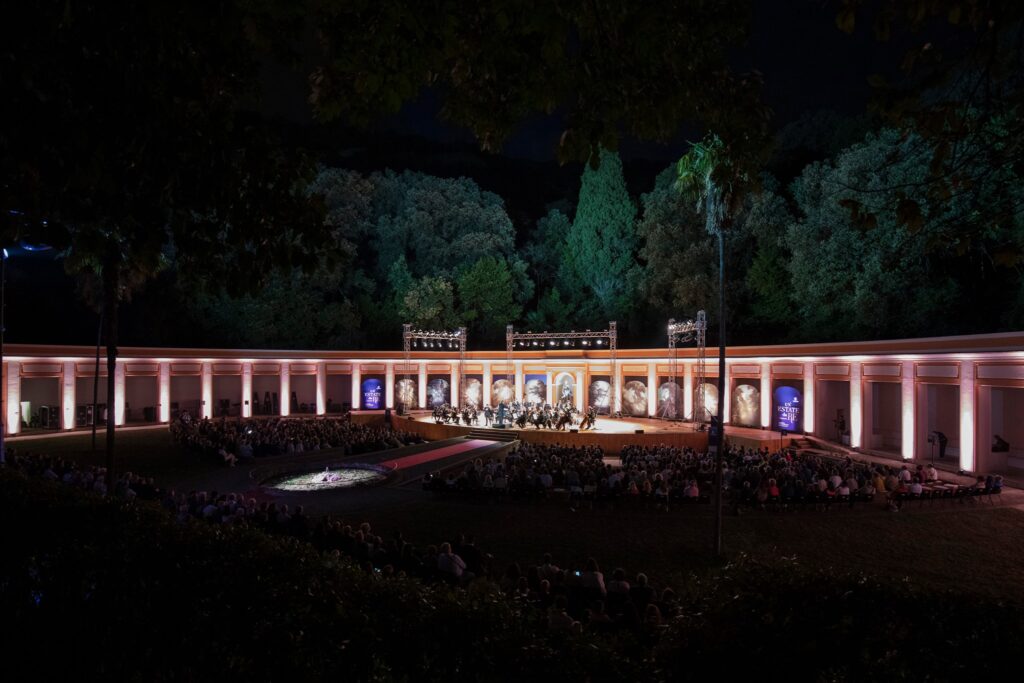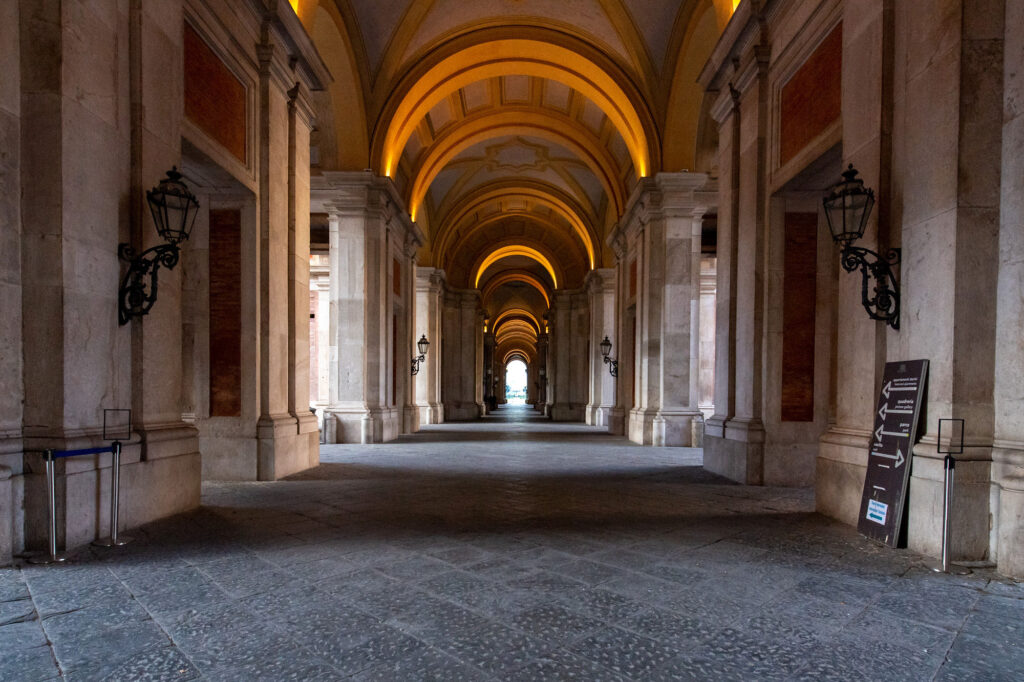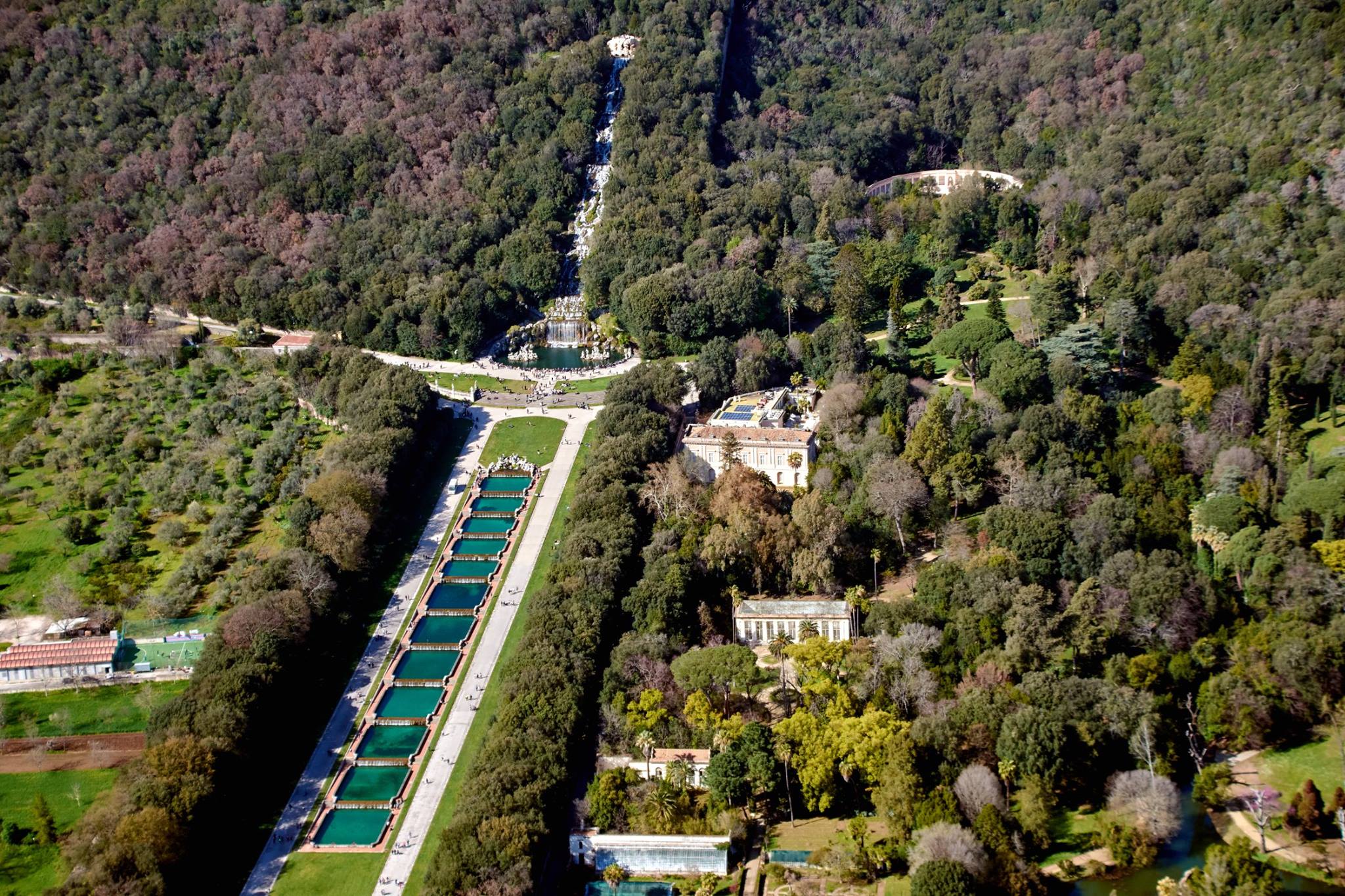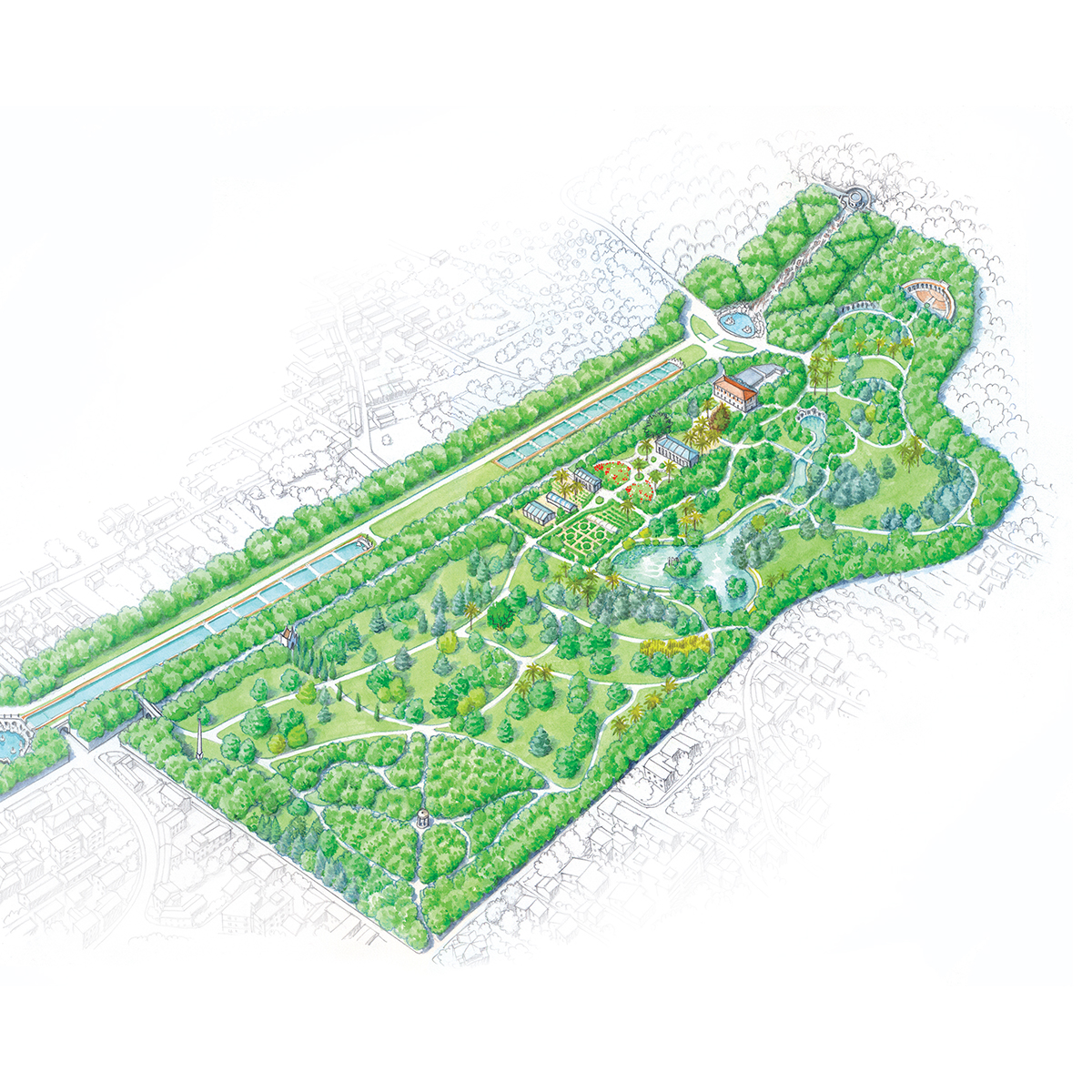Between nature and fiction, the avant-garde of the landscape
The English Garden was built at the behest of Queen Maria Carolina, on the advice of the British plenipotentiary minister William Hamilton. The surrounding wall was completed on the 7th of April 1787. Carlo Vanvitelli sumbitted the project to the court on the following 26 April. For its realization, the president of the Royal Society of London recommended a brilliant botanist: John Andrew Graefer. With the assistance of numerous greenkeepers, Vanvitelli and Graefer created a romantic garden dominated by seemingly wild views, hills and streams. Here, alleged ruins and statues of archaeological origin are linked to the exciting discoveries of Herculaneum and Pompeii. An exceptional variety of exotic plants testifies to the Bourbon’s interest in botany. To welcome the visitors, two sixteenth-century statues are Right beyond the entrance from taken from the old properties of the Acquaviva princes welcome the visitors, introducing him to an environment with a strong dreamlike ambience.
Right past the entrance two sixteenth-century statues, originally from the Acquaviva princes’ estates, welcome the visitors to an impressive dreamlike ambience.
 Find out more
Find out more
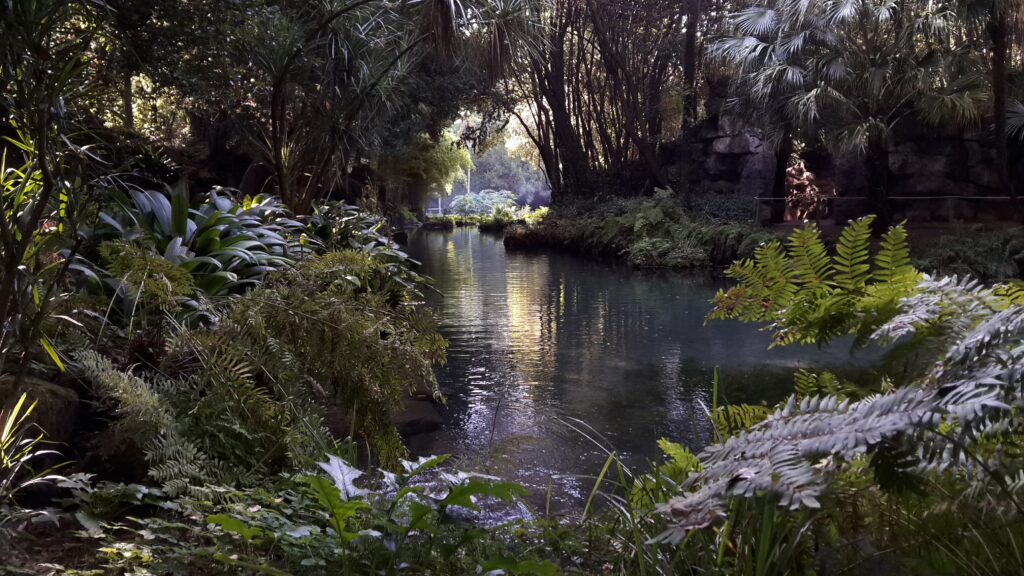
The English, French and Italian Garden
It can be said that modern Europe experienced the spread of a taste for greenery mainly based on three different types: the Italian garden, the French garden and the English garden. The first is predominantly characterised by geometry, water and ancient collections. Born in the aristocratic families’ estates during Renaissance, the Italian garden was linked to the romantic idea of ancient Rome and was often dominated by two perpendicular areas which delimited the parterre. In seventeenth-eighteenth-century France, the Italian model was reworked, enlarged and animated by virtuous perspective games. In the second half of the eighteenth century, English landscape architects, such as Capability Brown, modified the entire geometric matrix of the garden: a new romantic taste, dominated by wild atmospheres, spread across the European nobility’s residences. The English Garden of the Royal Palace of Caserta is one of the continental Europe’s first examples. Among the few at that time, the Anglo-Chinois garden of the Petit Trianon in Versailles stands out. The Petit Trianon was commissioned by Queen Marie Antoinette, Louis XVI’s wife and sister of Queen Maria Carolina.



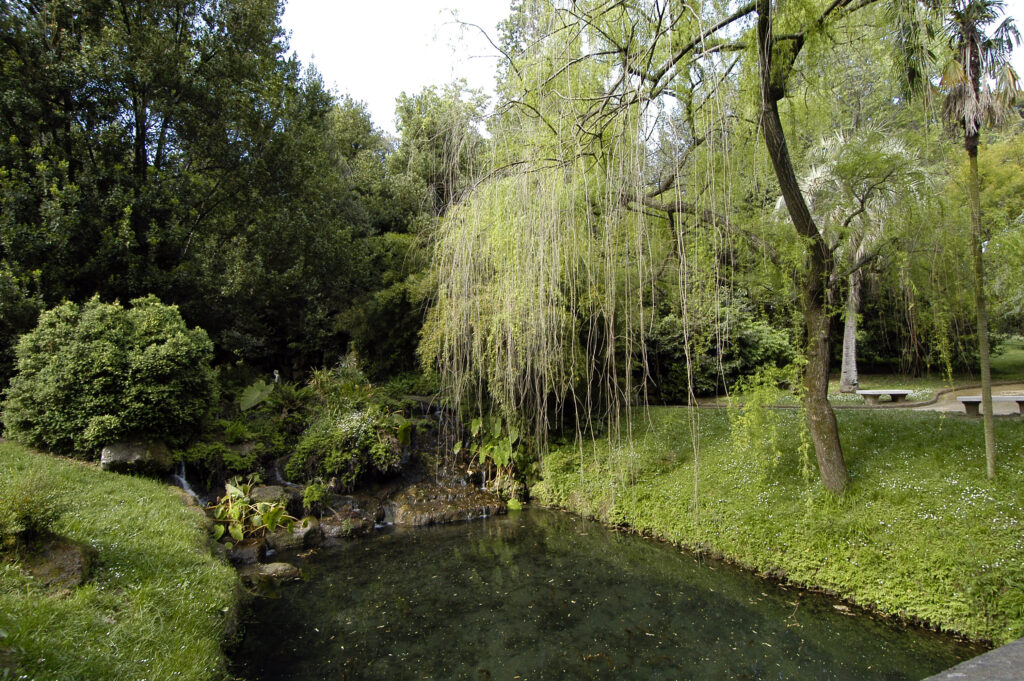
From Graefer to Terracciano
Graefer left Caserta to follow the court in Sicily in 1799 and later, during the French decade (1805-1815), his sons John, Charles and George took care of the English Garden. Starting in 1829, with the appointment of Giovanni Gussone as “botanist of the gardens of the Royal House and Sites of Naples and Sicily“, the English Garden boosted up its nursery production. Scientific and productive activities made it a real botanical garden. The Graefers passed the role to Geremia Ascione and to his son Francesco, who officially directed the works in 1853. The first editions of the Catalogue of multiplied plants sold in the Royal English Garden of Caserta were published under the Asciones’ management.
With the unification of Italy, the task of taking care of this precious green piece of art and science passed to Nicola Terracciano. Under his guidance, the English Garden of the Royal Palace of Caserta obtained important recognitions, such as the diploma of honour awarded during the Universal Exhibition in Vienna in 1873.




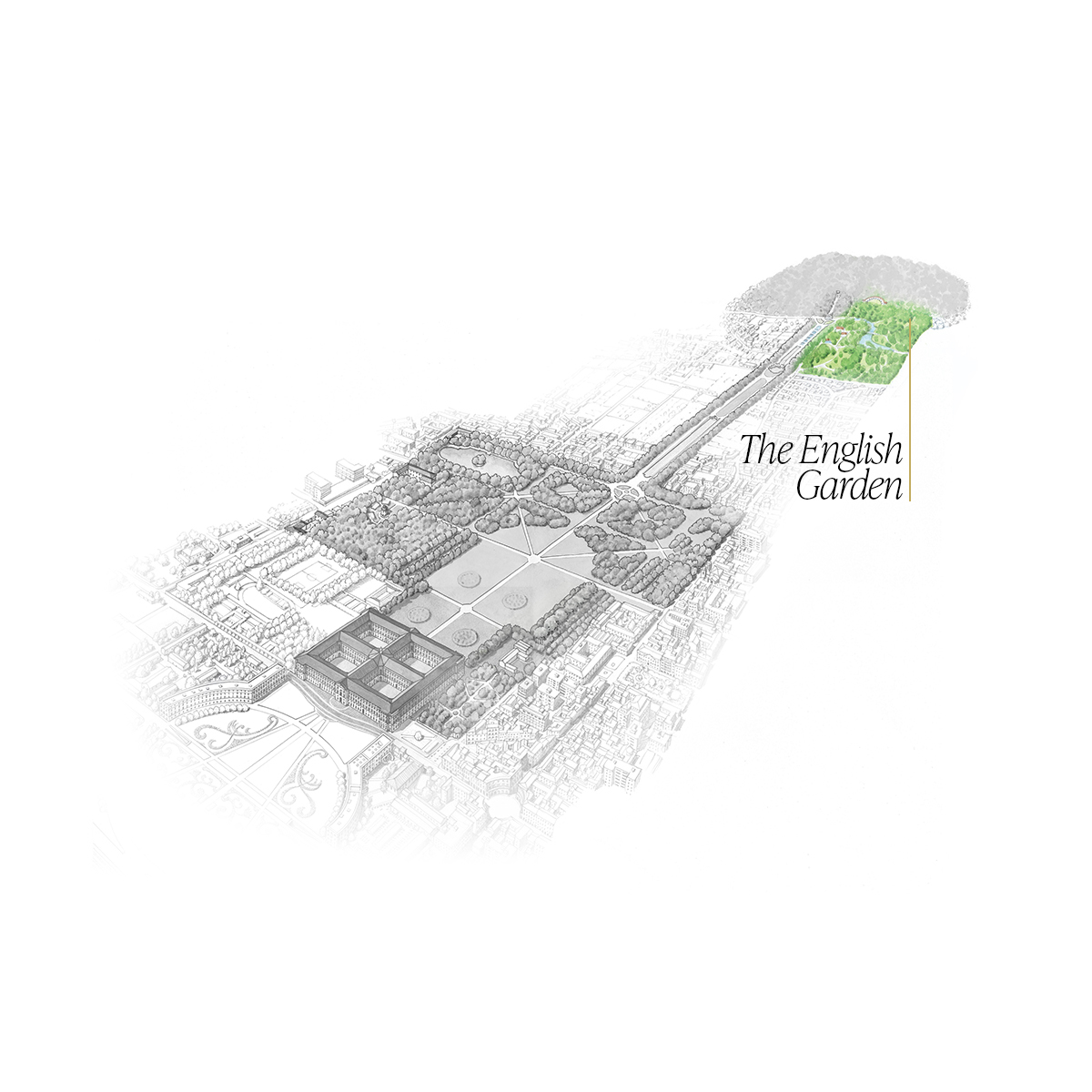

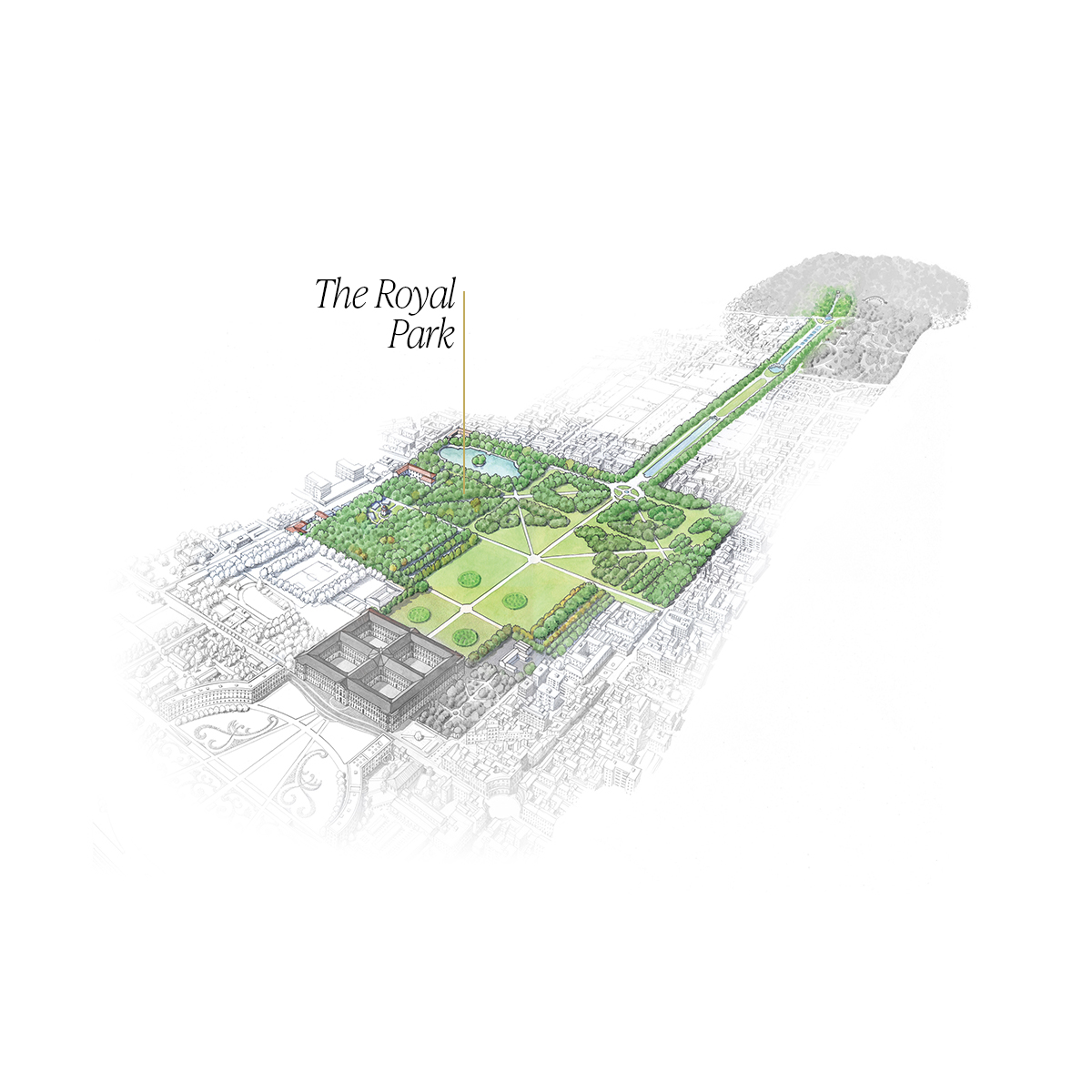
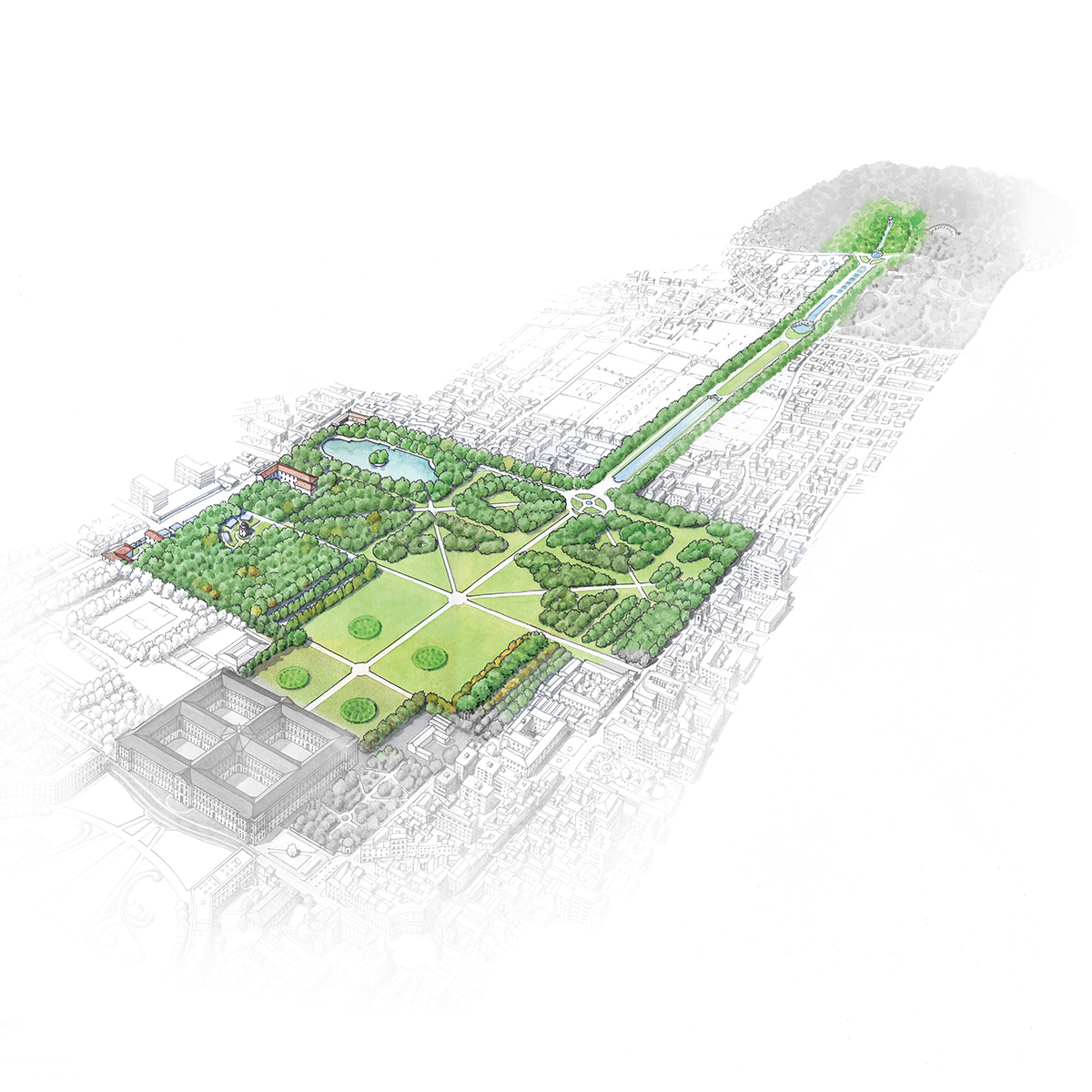
 Via d'acqua
Via d'acqua Castelluccia
Castelluccia Peschiera
Peschiera The Fountain of Dolphins
The Fountain of Dolphins The Fountain of Aeolus
The Fountain of Aeolus The Fountain of Ceres
The Fountain of Ceres The Fountain of Diana and Actaeon
The Fountain of Diana and Actaeon The Fountain of Venus and Adonis
The Fountain of Venus and Adonis The waterfall and Torrione
The waterfall and Torrione The Bosco Vecchio (Old Wood)
The Bosco Vecchio (Old Wood) The Margherita Fountain
The Margherita Fountain